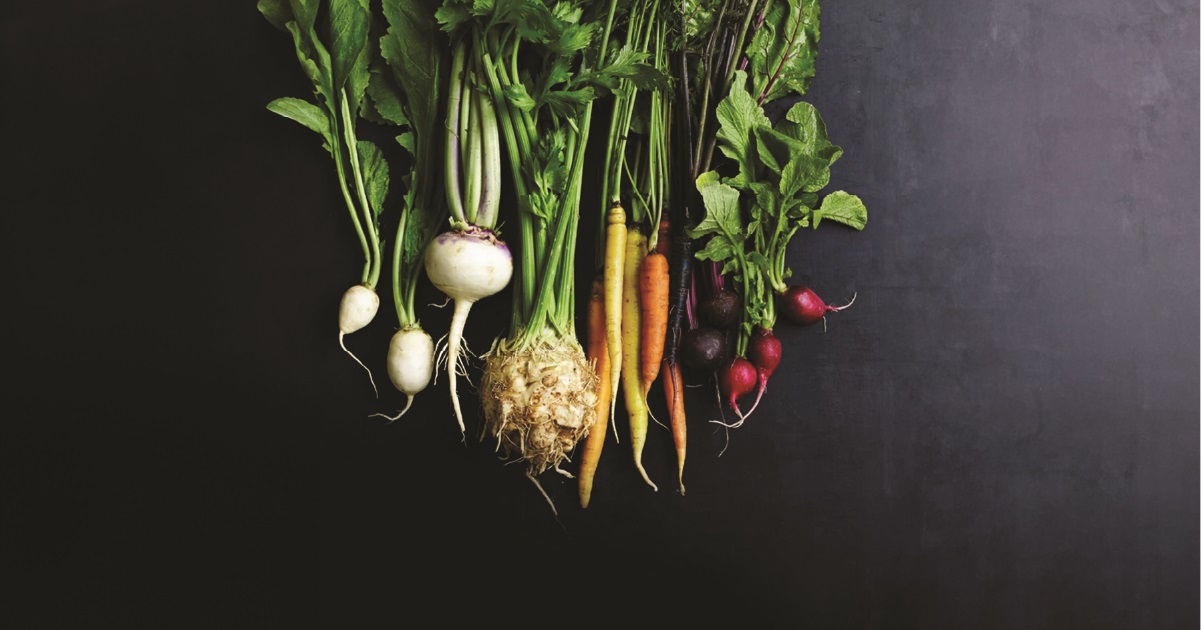Get Rooted: 9 Root Vegetables to Try Cooking this Week
- by bonappetit

From beets and carrots to radishes and ginger, root vegetables are the foundation of countless delicious dishes, bringing depth and earthy flavor to your plate.
In gardens, they may catch your eye with their leafy stalks and seemingly disorderly bunches of green stems protruding from the earth. A simple tug at these unassuming plants unveils what lies beneath the surface — colorful roots that are beloved by gardeners, chefs, and diners alike.
When it comes to preparing root vegetables, these versatile ingredients can be enjoyed in a multitude of delicious recipes, whether roasted, sautéed, mashed, or even incorporated into soups and stews.
Celebrate the breadth of root vegetables and explore dishes that highlight these ingredients:
Beets: These vibrant vegetables have a round or elongated shape with a smooth outer skin. Beets come in various colors and can even be used to make natural food coloring. They have a sweet and earthy flavor with a tender and slightly crunchy texture when cooked properly.
Try beet recipes:
Carrots: Don’t write carrots off because they seem pedestrian. Carrots have a firm and crunchy texture and a slightly sweet and earthy flavor. They can be enjoyed raw in salads, steamed, roasted, or used in soups, stews, and stir-fries.
Try carrot recipes:
Radishes: Radishes have a crisp texture and a distinct, peppery flavor that can range from mild to spicy depending on the variety. They are known for their quick growing time, making them a popular choice for home gardeners.
Try radish recipes:
Onions: Known for their pungent aroma and sharp taste, onions have a layered structure with papery outer skins and juicy inner layers. Onions are widely used in cooking and can be eaten raw in salads, pickled, or cooked in various dishes to add flavor and texture. Pro tip: refrigerating onions before cutting can reduce tears.
Try onion recipes:
Sweet Potatoes: Sweet potatoes have a sweet and earthy flavor, and they are high in fiber (which contributes to gut health) and rich in the antioxidant beta-carotene (which supports immune and vision health). They can be baked, boiled, steamed, roasted, fried, or mashed and are used in both sweet and savory dishes.
Try sweet potato recipes:
- Quinoa and Kale Stuffed Sweet Potato with Tahini Drizzle
- Sweet Potato and Kale Macaroni and “Cheese”
- Sweet Potato and Black Bean Chili
Fennel: Fennel has a distinctive appearance with feathery, fern-like leaves and a bulbous base that resembles celery. The bulb, also referred to as the fennel “heart,” has a crisp texture and a mild, slightly sweet, and anise-like flavor. It is often consumed raw or cooked and used in a variety of culinary dishes.
Try this fennel recipe:
Ginger: Ginger is widely known for its aromatic, spicy, and pungent flavor. It can be used in various ways to add flavor and depth to your cooking. Some examples include fresh ginger, ginger paste, ginger tea, ginger in baking, pickled ginger, ginger dressing and sauces, ginger smoothies, and more.
Try ginger recipes:
- Red Lentil Slaw with Tomato, Ginger, and Coriander
- Power Wrap with Sesame-Ginger Dressing
- Ginger and Almond Meal Cookies In-A-Jar
Turmeric: Turmeric is a flowering plant that belongs to the same family as ginger and is well-known for its vibrant, golden-yellow color and warm, earthy flavor. In cooking, turmeric is widely used as a spice and as a natural food coloring agent. It is a common ingredient in Indian, Thai, and Middle Eastern cuisines and is found in dishes such as curries, rice, soups, stews, and vegetable preparations.
Try turmeric recipes:
- Turmeric, Potato, and Cauliflower Coconut Curry Soup
- Au Gratin Yukons with Butternut Cashew Sauce
- Blended Tofu Egg Scramble
- Zucchini and Chickpea Fritters
- Golden Milk Latte
Garlic: Garlic has a strong and pungent flavor with a characteristic aroma that intensifies when the cloves are crushed or chopped. It adds a savory, slightly spicy, and complex taste to dishes, enhancing the overall flavor profile. In addition to its culinary purposes, garlic has historically been used as a (very smelly) bug repellent to ward off mosquitoes.
Try garlic recipes: